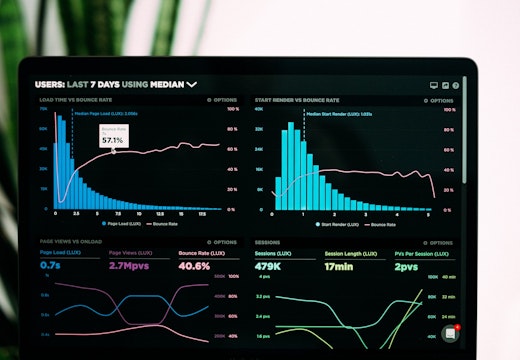Space optimisation: what is it and why is it important right now?
As companies adapt their workplaces for hybrid work, space optimisation is a key priority. But what is it all about and how can technology help? A new article series in collaboration with Deskbird explores the subject
As many businesses transition into more flexible work models, space optimisation is key for adapting to these new structures. These changes are exacerbated by shifting perceptions of work and the role of the office. It is no longer simply a place where tasks are completed. Rather, it serves as a workplace, wellness space and social hub.
After a few years of working in highly isolated environments, many people longed to return to the office in order to connect and socialise with colleagues. While work can be done productively from home, as many of us discovered during the pandemic, social connections have suffered. Thus, the office serves a previously underappreciated purpose: social connection.
‘The office now serves a previously underappreciated purpose: social connection’
With the perception of the office shifting and many businesses choosing to implement hybrid work models, how space is used and how much of it is needed should be reconsidered. Many are discovering that they require less space than before and with strategic space optimisation, businesses can confidently downsize their offices without jeopardising efficiency.
This article is the first in a series exploring the topic of space optimisation, a collaboration with the hybrid work experts at Deskbird. It will dive into the meaning of space optimisation, examine why it is important in the wake of emerging models of work, and provide information about how businesses can collect the right data to utilise this valuable information fully.
Defining space optimisation
Space optimisation is defined as using space, in this case, office real estate, in the most efficient way possible. It can also imply that the office is being improved in order to best serve the needs of employees, such as for focus time, collaboration and non-work-related activities like exercise or relaxation.
Additionally, such a workspace would have the right amount of room for those who need it. It would reflect the daily or weekly occupancy of the office. For example, a company that is fully in-person would be at 100 per cent occupancy daily, which would require more space than a company that is hybrid or remote.
Occupancy by space type
Office occupancy is better understood when broken down by space type. First is desk and office occupancy, which allows businesses to evaluate if there is extra space, such as unused desks, that can be repurposed to serve another need, such as more collaborative space. Use of desks and offices is easy to quantify with a desk reservation system and can provide valuable information to support decisions to downsize or repurpose space. These types of spaces are also more directly correlated to an increase in headcount. Ultimately, more employees would mean a need for more desks and offices.
Research from Realogix has shown that the need for rooms has declined. They attribute this to the digital nature of many meetings. Since many teams take meetings online through communication platforms, formal meeting spaces are less in demand. Similarly, there has been a drop in the demand for desks, likely because many people are working hybrid or remote.
When developing a space optimisation strategy, it is also important to note the occupancy of ancillary and support spaces, like lounges and break rooms. As the role of the office shifts to centre around collaboration and personal connection, such environments are essential for developing culture and overall efficiency.
Occupancy by time of the day/week
Office use also fluctuates by the time of day and time of week, which has implications for office space optimisation when measured. For example, with hybrid models increasing in popularity, not every employee comes in daily. And depending on the type of work model the company employs, some people work fully remotely, leaving additional areas unused. Knowing the ‘peak days’ helps with both space and resource planning.
Occupancy versus utilisation
While occupancy and utilisation are often used interchangeably when discussing the use of space, they have different roles and must be considered in conjunction when understanding the overall efficiency of your office.
First, occupancy and utilisation need to be defined separately. Occupancy is the measure of how many people are in a place, or in this case a workplace, at the same time. It essentially captures what the maximum number of employees in the office are. Space occupancy can be calculated by dividing the occupied square footage by unoccupied square footage.
While occupancy provides valuable information, it alone does not capture the whole picture. This is where utilisation comes in. It provides an additional level of information by framing space occupancy in terms of the rate and frequency that the office is being used. To calculate utilisation, divide occupancy by capacity. However, this is utilisation in its simplest form and other metrics should be taken into account, like which part of the office is being used most and its capacity for certain needs such as meeting rooms and storage.
Let’s take a 1,000 sq ft office building, for example. If the company has 10 employees and each is allocated 100 sq ft of office space, 1,000 would be the office’s maximum capacity. If only five employees showed up every day, taking up 500 sq ft, the occupancy would be 1 (the occupied square footage, 500, divided by the unoccupied square footage, 500). The utilisation of the space, however, would be 0.001 (divide occupancy, 1, by capacity, 1000).
Saving real estate costs
Why is space optimisation important? First and foremost, it is crucial to understand for corporate real estate (CRE) managers because if correctly evaluated, it can help save real estate costs. According to Metrikus, ‘Avoiding wasted office space could save businesses around the world US $1.5 trillion’. With the cost of living rising and rent in major cities increasing exponentially, budget spent on rent is an important consideration for many businesses.
If a company can have less space but still serve all business needs, they can downsize. Additionally, with precise measurements of desks and room usage, such as the ones suggested above, decisions about downsizing can be confidently made without comprising employee satisfaction or efficiency.
To better understand utilisation and cost-savings, Deskbird has created a hybrid office calculator. Using the rent, square footage, number of workspaces, employees and days hybrid, the calculator presents an estimate of net office cost savings and a breakdown of the most common ancillary costs.
Creating a more efficient office
Office efficiency means using the resources available to their full capacity and doing so in a way that garners optimal performance from the team. This avoids wasting time, space and resources. One key element of space optimisation is the gathering of occupancy data to guide decision-making. To further boost efficiency, use a desk reservation system that automatically gathers this information, streamlining the analysis process.
Understanding the type of spaces needed and those that are the most utilised is key here. As this varies from employee to employee or between teams, measuring such activities provides a more detailed view of how your space is being used and how it can be better allocated. Some roles require quiet spaces, such as focus booths, while others centre on collaboration and therefore need meeting rooms.
How to collect space optimisation data
Now that we have outlined the types of data necessary for space optimisation, such as occupancy, utilisation and weekly/daily usage rates, let’s explore the ways to collect this data.
One way is through desk booking apps like Deskbird, which collects: workforce analytics, so you can see where everyone works including remote employee distribution, office attendance and absences; and office analytics, which provides data on office space usage such as booked resources.
Begin by determining which metrics you want to measure. One of the most important is a desk sharing ratio, which is how many people are using one desk. Two people might be using the same desk at different times if the company has a hybrid model, making this ratio 2:1. However, if employees were to come in every day and need a desk, the ratio would be 1:1. Knowing this ratio will help businesses make the right decisions about how many desks to allocate. Other important metrics for space optimisation include utilisation, which we described in the first section of the article, and resource usage, such as energy and technology.
‘It has become best practice is to automate your data collection through technology…’
Another best practice is to automate your data collection through technology. Using apps and programs not only make the collection process automatic and more efficient, but it also helps with accuracy. Office sensors, for example, automatically count the number of people in a room and desk reservation apps note which areas of the office are being used most. When using such practices, it is also important to make your employees aware that their data is being collected and that you have consent to use it.
Finally, analyse the findings and come up with actionable recommendations to improve your workspace. For example, if the analytics reveal that certain areas are used more often while others are rarely used, you can transform this under-utilised space into an environment that is more suitable for your employees.
Key topic for future of work
The topic of space optimisation is key in the emerging world of flexible work. It encourages using the space available in the most efficient way possible. Understanding both office occupancy and utilisation through data collection can boost office efficiency, save costs, and help create work environments that truly fulfil employees and their needs.








